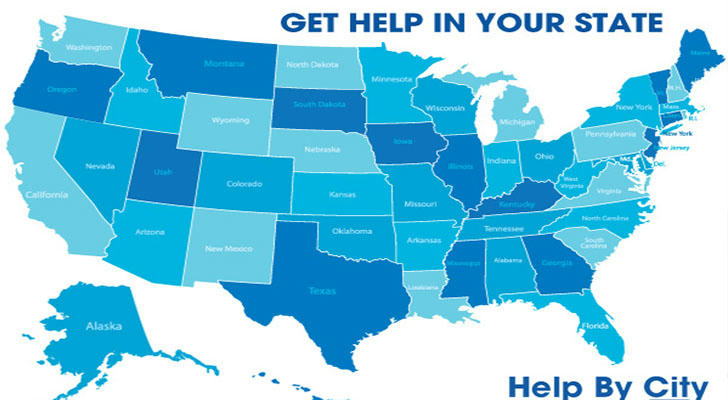How to Apply for Medical Assistance in America: A Step-by-Step Guide
Access to healthcare is a fundamental concern for many individuals and families across the United States. Medical assistance programs are designed to help those who may struggle to afford necessary medical care, providing support through various state and federal initiatives. Understanding how to apply for medical assistance can be a critical step toward securing healthcare coverage and ensuring access to essential services. This guide offers a comprehensive, step-by-step overview of the application process for medical assistance in America.

What Is Medical Assistance?
Medical assistance generally refers to government-sponsored programs that help eligible individuals and families obtain healthcare coverage. The most well-known program is Medicaid, which provides health coverage to low-income adults, children, pregnant women, elderly adults, and people with disabilities. Additionally, the Children’s Health Insurance Program (CHIP) offers coverage for children in families with incomes too high to qualify for Medicaid but too low to afford private insurance.
Each state administers its own medical assistance programs within federal guidelines, meaning the application process and eligibility criteria can vary depending on where you live. However, the general steps to apply remain similar across the country.
Step 1: Determine Eligibility
Before applying, it is important to determine whether you qualify for medical assistance. Eligibility is primarily based on income, household size, age, disability status, and other factors such as pregnancy or parenthood. Many states use the Modified Adjusted Gross Income (MAGI) method to assess income eligibility.
Common eligibility categories include:
- Low-income adults
- Children under 19 years old
- Pregnant women
- Elderly individuals aged 65 or older
- People with disabilities
- Parents or caretakers of dependent children
To get an initial idea of eligibility, many states offer online screening tools or eligibility calculators on their official health department websites.
Step 2: Gather Necessary Documentation
Applying for medical assistance requires submitting various documents to verify your identity, income, residency, and other eligibility factors. Preparing these documents in advance can streamline the application process.
Typical documents needed include:
- Proof of identity (driver’s license, state ID, passport)
- Social Security numbers for all household members
- Proof of income (pay stubs, tax returns, unemployment benefits)
- Proof of residency (utility bills, lease agreements)
- Birth certificates or immigration documents
- Medical records or disability documentation, if applicable
Having these documents ready will help avoid delays during the application review.
Step 3: Choose Your Application Method
There are several ways to apply for medical assistance in the United States. Applicants can select the method that best suits their needs and convenience:
- Online: Most states provide an online portal where applicants can complete and submit their medical assistance application. This method is often the fastest and most efficient.
- By Phone: Some states offer phone application services where applicants can speak with a representative who assists with the application process.
- In Person: Applicants can visit local Department of Health or Social Services offices to apply in person. This option may be helpful for those who prefer face-to-face assistance or need help understanding the application.
- By Mail: Paper applications can be downloaded from state websites, completed, and mailed to the appropriate office.
Choosing the right method depends on personal preference, access to technology, and comfort with the application process.
Step 4: Complete the Application Form
The application form will request detailed information about your household, income, assets, and health status. It is important to answer all questions accurately and completely to avoid processing delays or denials.
Common sections of the application include:
- Personal information (name, date of birth, contact details)
- Household composition (number of people, relationships)
- Income sources and amounts
- Employment status
- Health insurance coverage, if any
- Medical conditions or disabilities
Review the application carefully before submission to ensure all required fields are filled.
Step 5: Submit the Application and Supporting Documents
Once the application form is completed, submit it along with the required documentation through the chosen method. If applying online, most portals allow uploading digital copies of documents. For in-person or mail applications, provide physical copies.
Keep copies of all submitted materials for your records. Some states provide confirmation numbers or receipts upon submission, which can be useful for tracking your application status.

Step 6: Respond to Follow-Up Requests
After submission, your application will be reviewed by the state agency. It is common to receive follow-up requests for additional information or clarification. Respond promptly to any such requests to avoid delays.
If you miss a deadline or fail to provide requested documents, your application could be denied or delayed. Maintaining communication with the agency is important throughout the process.
Step 7: Receive the Eligibility Determination
Once your application is fully processed, you will receive a notification regarding your eligibility status. If approved, the notice will detail the coverage start date, benefits included, and any responsibilities you may have.
If your application is denied, the notice will explain the reasons and provide information on how to appeal the decision if you believe it was incorrect.
Step 8: Enroll in a Health Plan
For those approved for medical assistance, the next step is often selecting a health plan. Many states offer a choice of managed care plans or fee-for-service options. Consider factors such as provider networks, covered services, and convenience when choosing a plan.
Enrollment assistance is usually available through state agencies or community organizations to help you make an informed decision.
Additional Tips for a Successful Application
- Start Early: Begin the application process well before you need coverage to allow time for processing.
- Be Honest: Provide truthful and accurate information to avoid complications.
- Seek Assistance: If the application process feels overwhelming, seek help from local health navigators, community organizations, or legal aid services.
- Keep Records: Maintain copies of all forms, correspondence, and documentation related to your application.
- Stay Informed: Eligibility rules and program details can change, so stay updated through official state websites or trusted sources.

Conclusion
Applying for medical assistance in America involves several important steps, from determining eligibility to enrolling in a health plan. Understanding the process and preparing thoroughly can help applicants navigate the system more effectively and increase the chances of securing valuable healthcare coverage.
For individuals and families facing financial challenges or health concerns, medical assistance programs provide essential support. Taking the time to follow this step-by-step guide can be a vital move toward accessing the care needed to maintain health and well-being.
